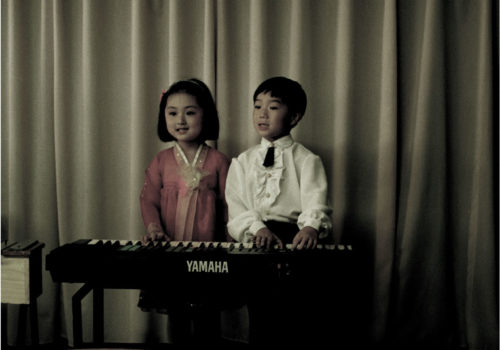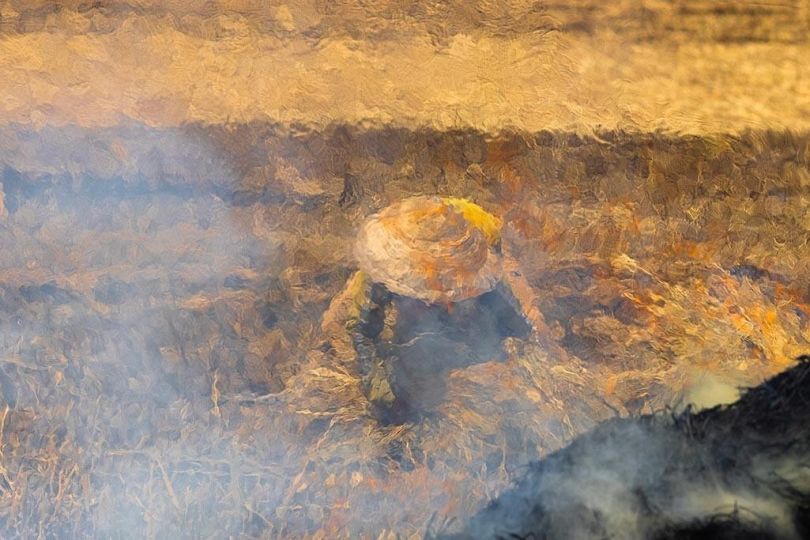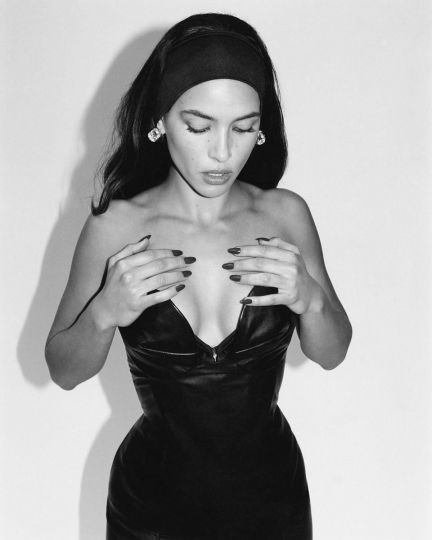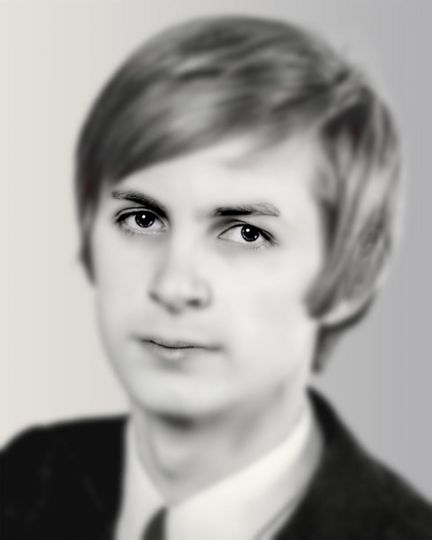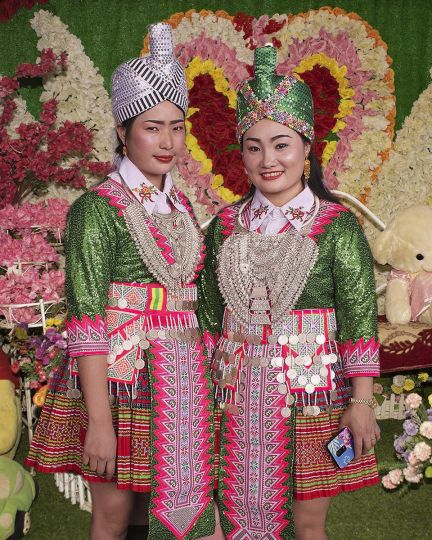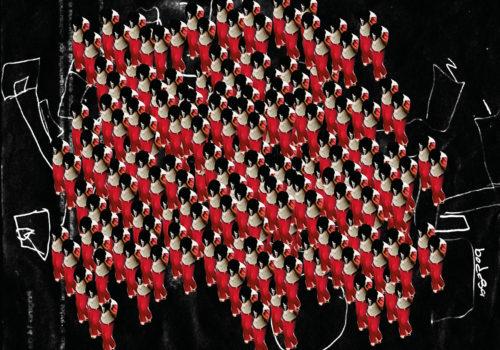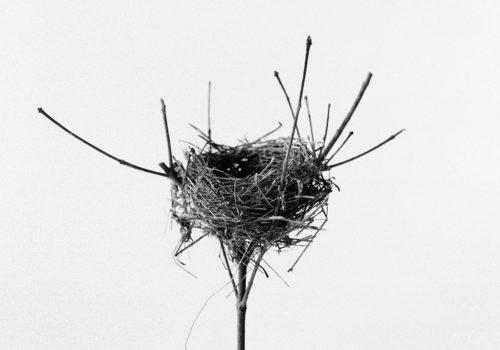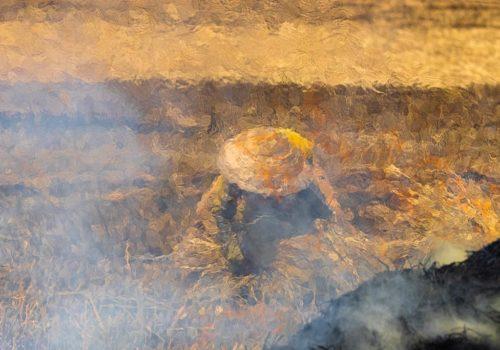When authorities in North Korea’s capital of Pyongyang returned Back Seung Woo’s confiscated and censored images taken during his visit there in 2001, the South Korean photographer was dismayed. The few they had left uncut were typical of the politically correct, bland pictures divvied out to the media. He filed them away, convinced they were useless.
Several years later, though, at a show of Pyongyang photography in Paris a weird thing happened. He recognized among the exhibition photos the same jogging woman he had shot in 2001. From his foreigner’s-only hotel window he had photographed her running along the street at the exact time every day dressed in an uncanny, neat outfit with white blouse and dark skirt. Definitely not sportswear. At the time it seemed very odd, but he didn’t connect the dots until that moment. He realized she was a prop in a propaganda tactic aimed at convincing foreign visitors that North Korea’s citizens were healthy and happy. They even jogged! He took a closer look at those filed photos and discovered in the tiny details a surreal attempt to cover-up reality: A nation of brainwashed and oppressed people living in a totalitarian Stalinist dictatorship. He likened Pyongyang to the “Truman Show,” the movie starring Jim Carey that portrays a controlled society where the citizens are required to perform idealized roles.
The “Blow up” series in the show are enlarged — blown up — sections of the originals, taken with 35mm film. The grainy details reveal intriguing truths: The personality cult of former president “Great Leader>” Kim Il-sung (1912-1994) and his son, “Dear Leader” Kim Jong-il, both omnipresent and deified in paintings, statues and photos; the importance there of uniforms and uniformity; the emptiness and sterility of the city’s urban landscape; the perfectly imperfect world of “The Hermit Kingdom;” the right to choose as a fundamental right of all people. As an artist, Back shows us his ‘right to choose’ the fiction of reality rather than photographic ‘reality’: Children display mannequin-doll cherubic smiles; a smiling woman poses with a mobile phone (a show of modernization for foreign tourists); the wide, clean streets are traversed by few cars and pedestrians, with no bicycles in sight; a huge concrete apartment building appears bereft of residents. Also in the show are works from Back’s “Utopia,” “Real World I” and “Real World II” series — all testing the meaning and implications of idealized reality and unreality.
The “Utopia” images are based on propaganda photographs of buildings taken by the North Korean authorities in the 1970s. Back has digitally modified, colored and ‘perfected’ the buildings and structures — placed in the utopian world of North Korean.
The “Real World I” series shows miniatures of famous landmarks shot in a theme park. The mini-fake Capitol building in Washington, D.C., Eiffel Tower, Leaning Tower of Pisa, and other monuments of greatness appear strikingly real and full-size.
The “Real World II” series uses plastic toy soldiers photographed at night (think top-secret mission) in odd places juxtaposing size — in an empty parking space, on a high brick wall, in a big lawn at the base of a fence. Again unreality strikes in the most real of locations. The series was inspired by his brief time spent in England. There, he was often asked about his military service (required of all South Koreans) and he found it strange to use the subject of war as a communication tool. It was especially difficult because he could barely speak English, and he said it seemed like everyday was a battle. From that point he began his toy soldier collection, gathering pieces from around the world. With his works on an oppressive state, the foibles of utopia and the absurdity of war, is Back revealing a political agenda? “No,” he says, explaining that he is always trying to look at both sides with a clear perspective. Ah, but what a remarkable perspective he has as visual trickster and teacher.
Lucy Birmingham
Back Seung Woo
Misa Shin Gallery
1-2-7 Shirokane, Minato-ku
Tokyo 108-0072

